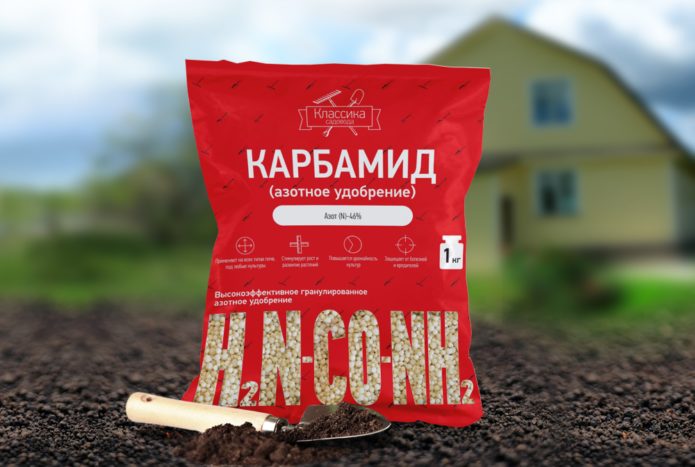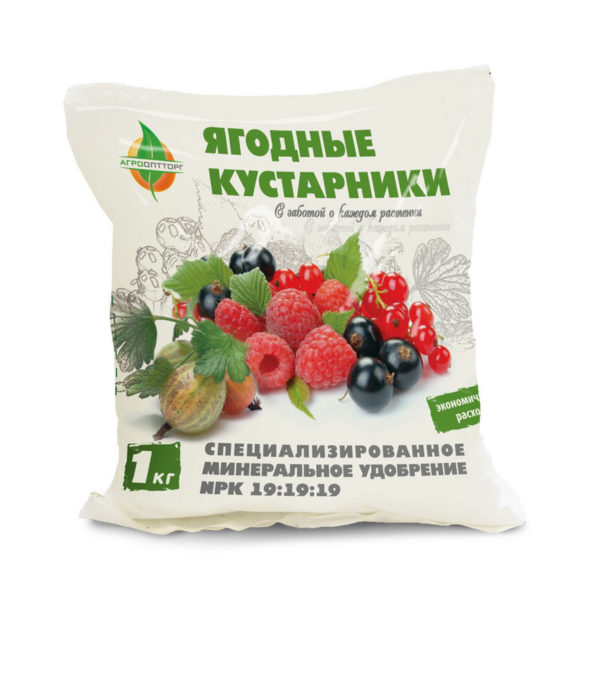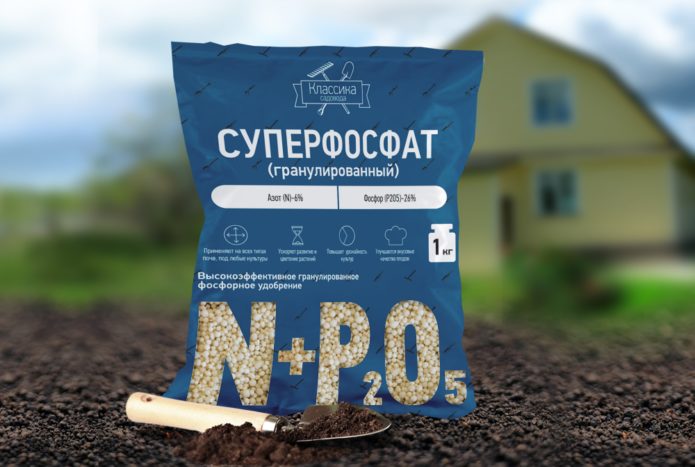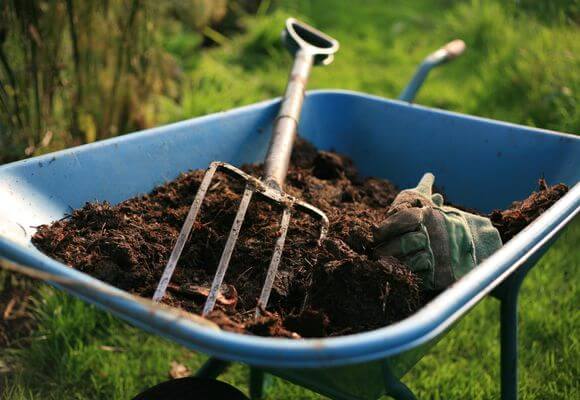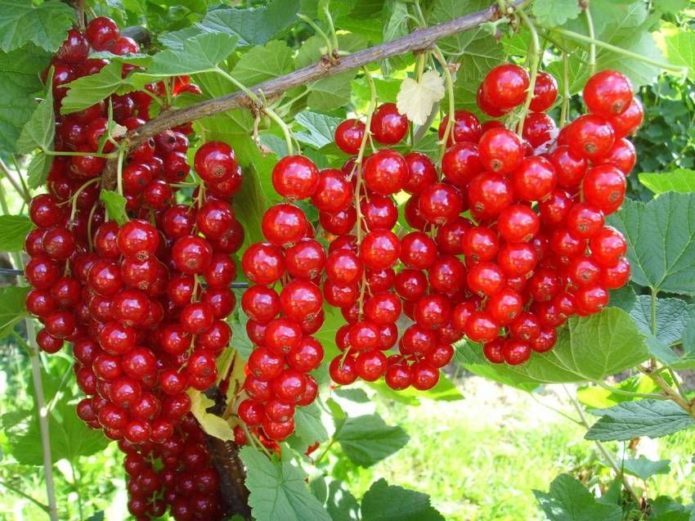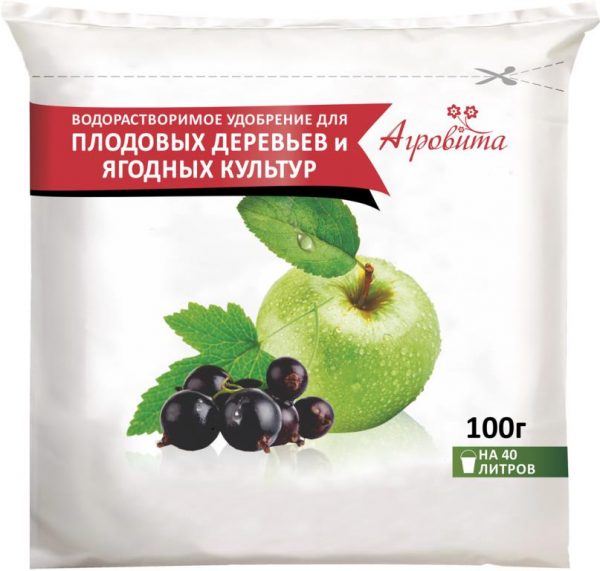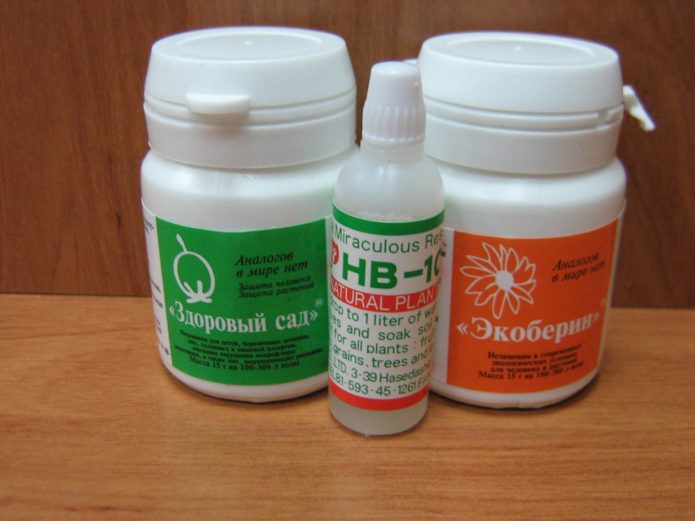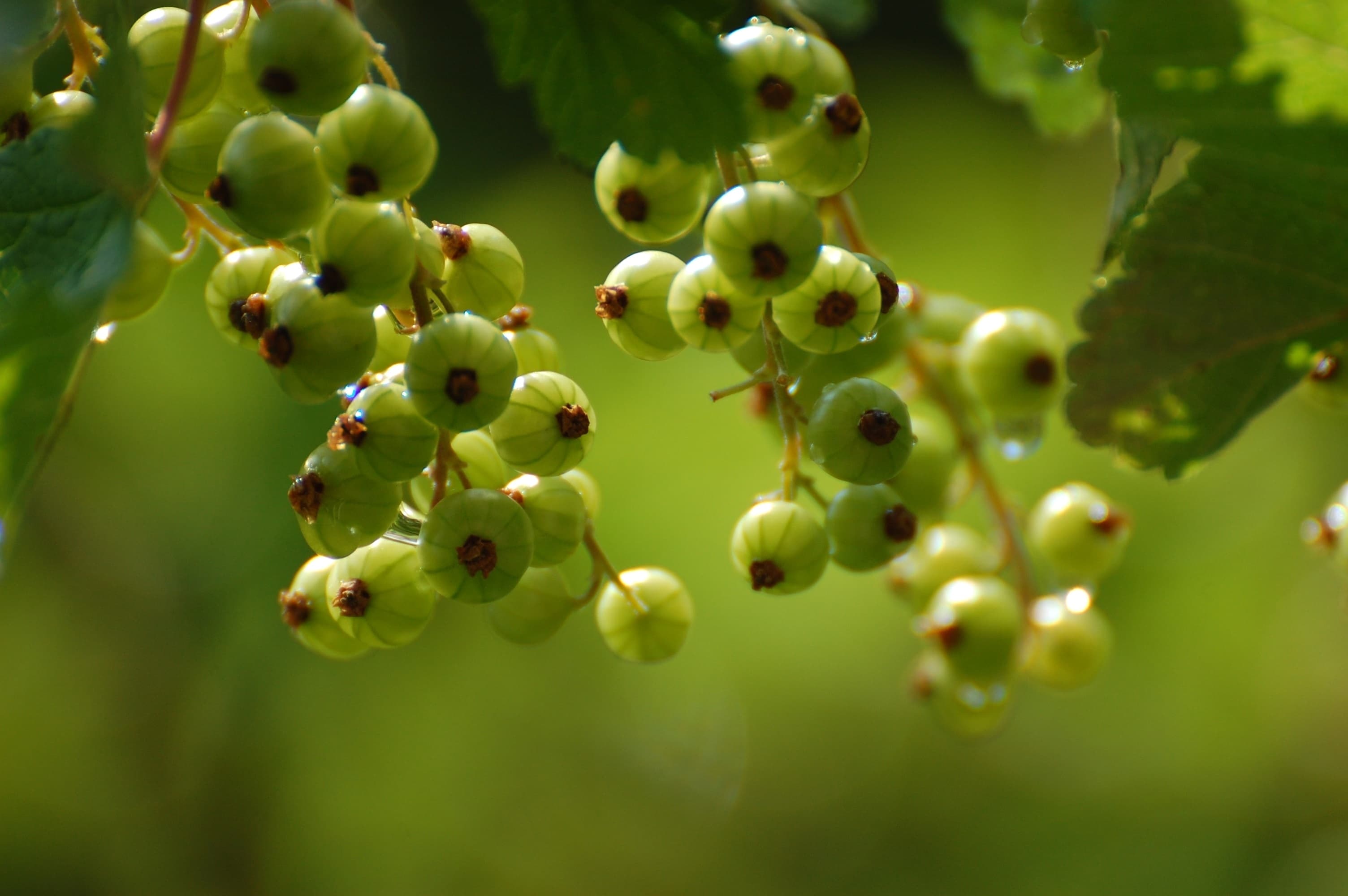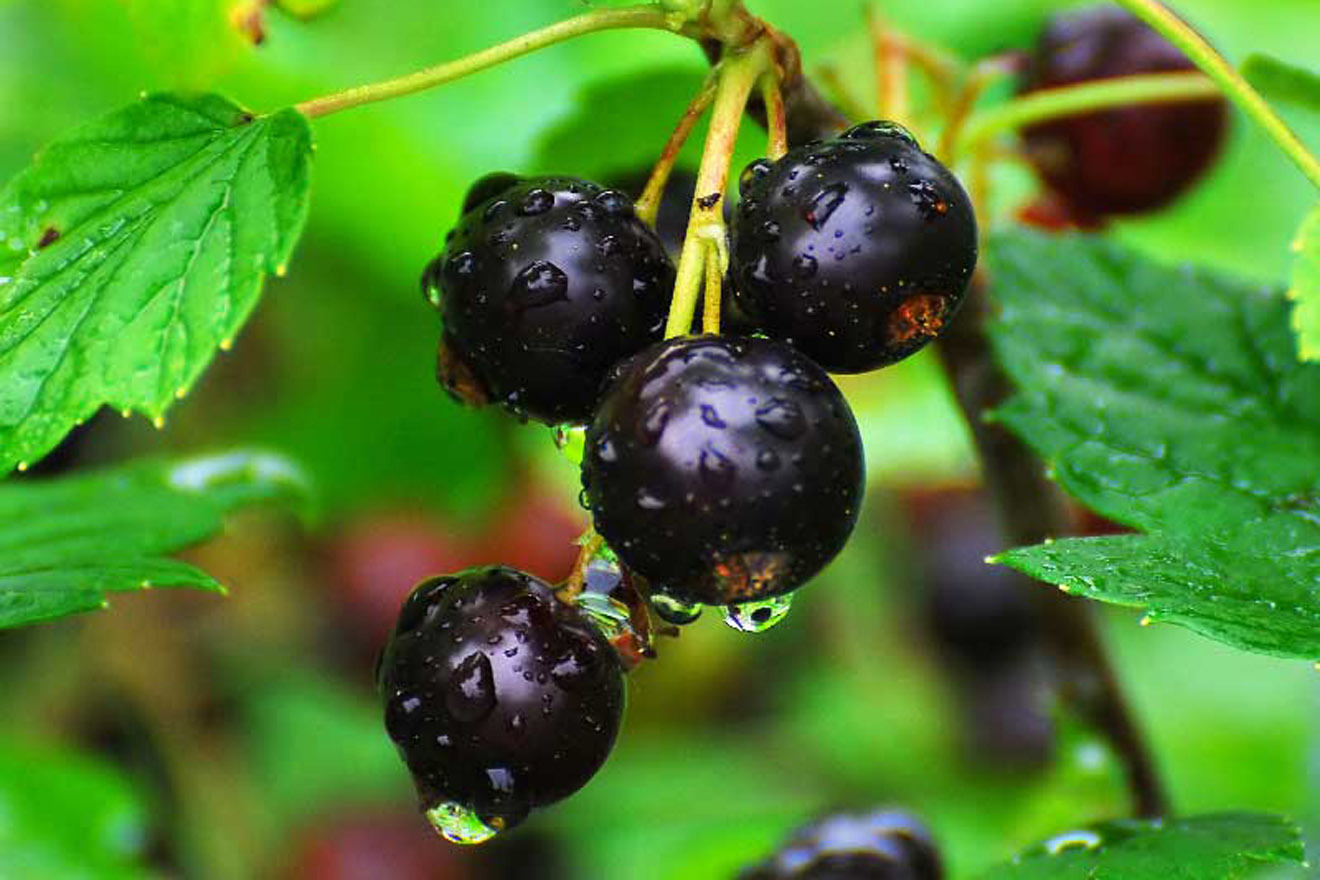Currants are rich in vitamins, tasty and healthy, so gardeners often plant them on their plots. But sometimes they forget that in order to get a powerful harvest, it needs to be fed and watered.
Content
The value of the main fertilizer and dressing for currants
Currant is a perennial shrub that grows in one place for up to 10-15 years. Every year the plant absorbs a lot of minerals, depleting the soil, so annual feeding for currant bushes is required. All types of currants love organic and mineral fertilizers. During the season, berry bushes are fed several times, starting in early spring and ending in late autumn. Bushes currants planted in autumn fed in spring.
With spring and autumn feeding, mineral fertilizers differ in their composition. For the development of shoots and buds, nitrogen nutrition is very necessary, and after fruiting, microelements are required that allow the currants to prepare for winter and lay new flower buds for the future harvest. Failure to meet the timing of the introduction of micronutrients can lead to unpleasant consequences.
Never feed currants with urea, mullein infusion or bird droppings in the second half of summer - excess nitrogen in the soil will lead to the growth of shoots, the wood of which does not have time to ripen to frost, and the plant may die.
After applying mineral or organic fertilizers, the soil around the bushes must be watered well so that the plant roots are not burnt. If the weather is rainy in spring, then water less or use dry preparations.
Main fertilization for currants
Many gardeners advise using mineral fertilizers, it is inexpensive, quite simple and effective, but you must always remember that an excess of fertilizers is harmful, nitrates accumulate in the berries, which affects human health. It is much safer to use organic fertilizing: compost, biohumus, manure, humus, ash. But even here you need to remember about the rate and timing of introduction.
The currants are planted in a new plot as one of the first crops. It is not difficult to plant it, and the harvest will be soon. In a few years, it will even be measured in buckets:https://flowers.desigusxpro.com/en/yagody/smorodina/kak-posadit-smorodinu.html
Nitrogen fertilizers for currants
The plant needs nitrogen fertilizers during the period of active growth - in early spring. At this time, the soil is not yet sufficiently warmed up, the soil microflora works poorly, and the currants need a lot of nutrition, therefore it is during this period that nitrogen is introduced into the soil.Depending on the region, 2-3 dressings are carried out starting from the moment the kidneys open, then every 2 weeks, until June.
The first feeding is carried out at the time of swelling of the kidneys: under each bush, 1 tablespoon of urea is scattered, which is slightly embedded in the soil... And also this fertilizer can be diluted in a bucket of water and water the near-stem circle.
After 10-14 days, a second feeding with nitrogen fertilizers is carried out. It is best to spill currants with infusion of mullein, horse manure or poultry droppings.
Table: nitrogen-containing preparations and methods of their use
| Name | Mode of application | ||
| Urea, urea | Spread 10-15 grams under the bush or dissolve in a bucket of water and pour over the trunk circle. | ||
| Mullein | Dissolve 2 kg in 10 liters of water, stir and leave for 2 to 12 hours, pour over a bucket on a bush. | ||
| Chicken droppings | Soak 1 kg in 10 liters of water, leave for up to 3 days, spill the root zone, followed by watering. | ||
| Orgavit | Pour 200-300 grams of dry preparation under each bush. You can dilute 100 grams of Orgavit in a bucket of water and insist from 4 hours to 2 days, pour 1 liter of solution under each plant, then spill it with water. | ||
In addition, you can use herbal infusion, which is prepared from nettle, burdock and dandelion... These plants contain a lot of nutrients in an easily assimilated form, so gardeners very often use it for spring feeding.
Simple ways of breeding currants at their summer cottage:https://flowers.desigusxpro.com/en/yagody/smorodina/kak-razmnozhit-smorodinu.html
To prepare the herbal infusion, use a 10-liter bucket or a 30-liter barrel. Fresh chopped grass is poured into it, filling the container by 2/3 of its volume, add 1-2 cups of sugar, or better - old jam. Then water is poured into a container and EM preparations are poured (Shining-3 or Baikal in accordance with the instructions), you can also add 100-500 grams of chicken manure or horse manure, cover with a tight lid or cover with foil. The solution is infused for about 3 days and is applied when the water begins to foam. One glass of the solution is diluted in a bucket of water and the shrubs are fed on wet soil.
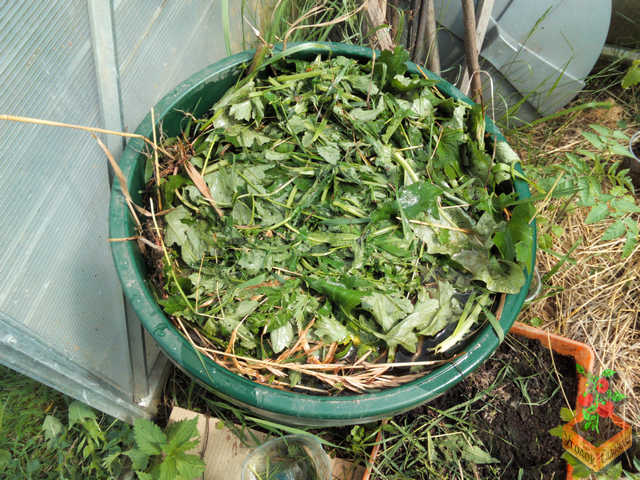
Herbal infusion of nettle, burdock and dandelion has a lot of useful substances in a form available to plants
Complex fertilizers for currants
Complex fertilizers contain a full set of basic trace elements: nitrogen, phosphorus and potassium. There are many companies that produce such fertilizers on the market, and when buying, you need to pay attention to the difference between spring and autumn fertilizers. In the spring we feed with fertilizer with a predominance of nitrogen, and in the middle of summer and autumn - with potassium and phosphorus.
The soil under the currants should be slightly moist - this is necessary for the absorption of microelements, therefore, in dry seasons, it is imperative to water the bushes and mulch with compost, mowed grass or cardboard. Thanks to mulch, evaporation of moisture from the soil surface will be reduced several times.
Phosphate fertilizers for currants
Phosphorus is necessary for currants during the period of fruit ripening, laying new flower buds and preparing for winter. Therefore, in the second half of summer and autumn, plants are fed with superphosphate, at the rate of 1 tablespoon under a bush. In wet weather, the preparation can be sprinkled directly on the ground and lightly rake; in dry weather, it is preferable to pre-dissolve the granules and spill the bush around the crown perimeter.
Very often, phosphorus dressings are combined with potash, adding one tablespoon of potassium sulfate. At the same time, in plants, resistance to various fungal diseases increases.
Organic fertilizers for currants
Most often, compost, horse or cow manure and bird droppings are used from organic fertilizers. All these fertilizers have a very large amount of nitrogen, therefore, they can be applied to the soil only in spring, to activate the growth processes of the bush. But in late autumn, when stable subzero temperatures are established, and the currants have already dropped their leaves, you can pour several buckets of compost or bedding horse manure under each bush - this will protect the root system from freezing, and in the spring it will additionally provide food after the snow melts.
In addition to the main food, compost and manure improve the soil structure.
Organic mulch is also a good food for currants. It protects the soil from moisture evaporation and overheating in the sun, and also, decomposing and overheating, releases carbon dioxide and various microelements, thanks to which the currants grow better.
Folk remedies for fertilizing currants
Potato skins, as well as bread crusts and yeast are a good way to feed currants.
During the period of berry pouring, especially in black currant, there is a shortage of starch, therefore, as soon as the berries begin to stain, gardeners boil a bucket of potato peelings, cool for several hours and pour 2-3 liters of infusion under each bush.
Very often, gardeners make mash for feeding, for this 0.5 kg of baker's yeast is diluted in a bucket of warm water with the addition of 50 grams of sugar, as soon as foam appears - you can use it - pour 10 liters of infusion under each bush.
Braga can also be made using old dry rye bread, which is filled 1/3 of a bucket, then add 50 grams of sugar or old jam. The use is the same as for mash.
Do not forget to use top dressing on wet soil and preferably in the evening.
Video - bread leaven for currants
Features of making dressings for currants
Fertilizing currants is an important element for harvesting. Unfortunately, in many vegetable gardens it grows in a semi-wild state, without additional fertilizing, pruning and proper care, and in the southern regions they even forget to water it. Observing the timing of the introduction of mineral or organic fertilizers, we not only increase the yield of currants, but also make it tastier, healthier, and better quality.
Technology of growing currants, features of planting and caring for shrubs in different regions:https://flowers.desigusxpro.com/en/yagody/smorodina/uhod-za-smorodinoy-vesnoy-borba-s-vreditelyami.html
Top dressing of currants at different times of the year
So, in early spring, when the buds open and the first leaves appear, you need to start feeding the plants with nitrogen-containing preparations and fertilizers. It can be urea, ammonium nitrate, manure. While the soil is wet, the preparations are scattered over the surface and slightly embedded in the soil. You can dissolve them in water and water the plants under the bush.
Further, every 2 weeks, you can repeat the feeding, or it is better to use others, for example, if you took urea, then pour the infusion of mullein or bird droppings a second time, and after another 2 weeks - with herbal infusion.
In mid-June, we stop feeding with nitrogen and do watering with mash, and by the time the berries are poured, with infusion of potato peel. After picking berries, we feed the currants with ash or potash-phosphorus fertilizers.
On poor or sandy soils, it is desirable to fertilize more often, and to mulch the soil itself.
In late autumn, 1-2 buckets of compost should be placed under each bush. To increase the immunity of berry bushes, granules HB-101 can be laid out on the soil surface - it is a growth stimulator and an activator of the immune system, created on the basis of extracts from pine, cedar and cypress.
Video - how and what to properly fertilize shrubs
Features of feeding different types of currants
Bushes of red and white currants often grow more powerful, their branches can bear fruit for 5-6 years, and the root system lies much deeper than that of black currants. Due to this, their yield can reach 10-12 kg per bush, but they also take more nutrients from the soil.
In order for the nutrients to penetrate deeper into the soil and reach the suction roots, a narrow trench about 20-30 cm deep is dug along the crown perimeter and mineral or organic fertilizing is poured into it, then the grooves are buried with soil. You can make not grooves, but indentations and pour or pour solutions into them, but it is very important to place them on all sides of the crown, since each root of the bush is responsible for its own branch and scattering fertilizers only under a part of the crown, you will see the difference in the development of the bush.
Foliar feeding of currants
Nutrients penetrate the plant much faster through the leaf stomata than through the roots, therefore it is recommended to carry out periodic foliar spraying on the leaf.
Most often, complex water-soluble mineral fertilizers are used for this, as well as various immunostimulants.... If you use minerals, then alternate them with root dressings, with a difference of at least 2 weeks.
To strengthen the immune system, plants use a bio-cocktail: Ecoberin, Zdorovy Sad and HB 101, sprayed once every 7-10 days. These natural remedies help the plant cope with adverse weather conditions, reduce the risk of disease, and prevent pests.
Currants are fed in spring, summer and autumn. At the time of budding and flowering, it is necessary to carry out nitrogen-containing fertilizing. During the period of fruit filling and in autumn - phosphorus-potassium. Shrubs also respond well to organic fertilizers - ash, compost, humus.

